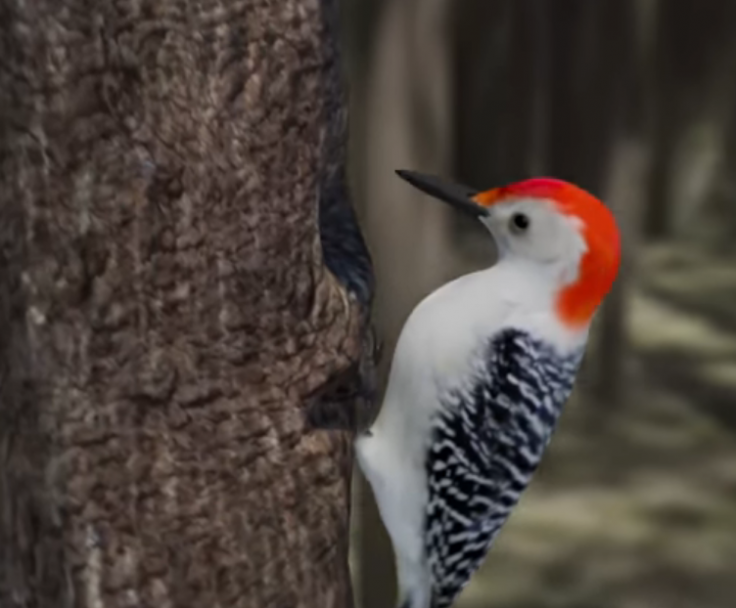
Getting your head hit with a ball is not serious at all, say researchers. Woodpeckers do that all the time.
A woodpecker pecks the hard surface of a wood with its peak so rigorously that 1200–1400 G force of each peck which can also be 20 times greater can normally cause temporary unconsciousness or concussion in humans. Woodpeckers can move their head up to 13 to 15 miles per hour and peck at an average of 12,000 times a day.
The woodpeckers usually never knock themselves out while doing this, which led researchers to study the heads of woodpeckers and the way they are designed to frame new football helmets and other head protection gears for sports.
The study has been published in PLoS ONE and focuses on woodpeckers and head trauma. Three researchers George Farah, Donald Siwek and Peter Cummings from the Boston University School of Medicine studied the brains of 10 ethanol preserved woodpeckers and five ethanol preserved red-winged blackbirds and used stains to detect the presence of tau protein.
Autopsies of former NFL players revealed that those who suffered from chronic traumatic encephalopathy (CTE) symptoms had tau protein in their brains. The staining was unsuccessful in seven woodpecker brains but two of the remaining three woodpecker brains tested positive. Both the brains had tau protein.
Tau protein builds and stabilizes the microtubules that form the cytoskeleton of nerve cells. It was concluded that head trauma leads to tau protein leakage from the nerve cells which leads to accumulation of tau protein in the brain. It was previously believed that woodpeckers do not face such accumulations as their brains are resistant to trauma.
The recent finding leads one to think whether tau protein actually helps the birds protect themselves against brain damage or does their brain react to tau protein differently as opposed to humans.
Studying concussions and brain damage in woodpeckers is difficult. The birds are better equipped. Matt Soniak, clearing the doubts for Mental Floss said that a part of the woodpecker's skulls primarily near the forehead and the back of their brain is thicker and spongier. They have a horseshoe-shaped hyoid bone around the skull that acts as the armor. Their brains are therefore protected in that given area and don't move much when compared to human brains. The birds' brains being smaller has an altogether different mechanism.
Speaking of the pecking dynamics of the birds, the mechanism doesn't have any effect on the brain but impacts the body. A study published in Science China Technological Sciences states that the majority (99.7%) of the impact energy goes to the body and the force that goes to the brain is converted to heat which doesn't injure the brain due to the presence of the brain covering.
The heat dissolute and the hyoid bone and the skull provides anti-shock protection. Studying the head mechanism of the woodpeckers can help develop and modify the head gears and blocking mechanisms.








